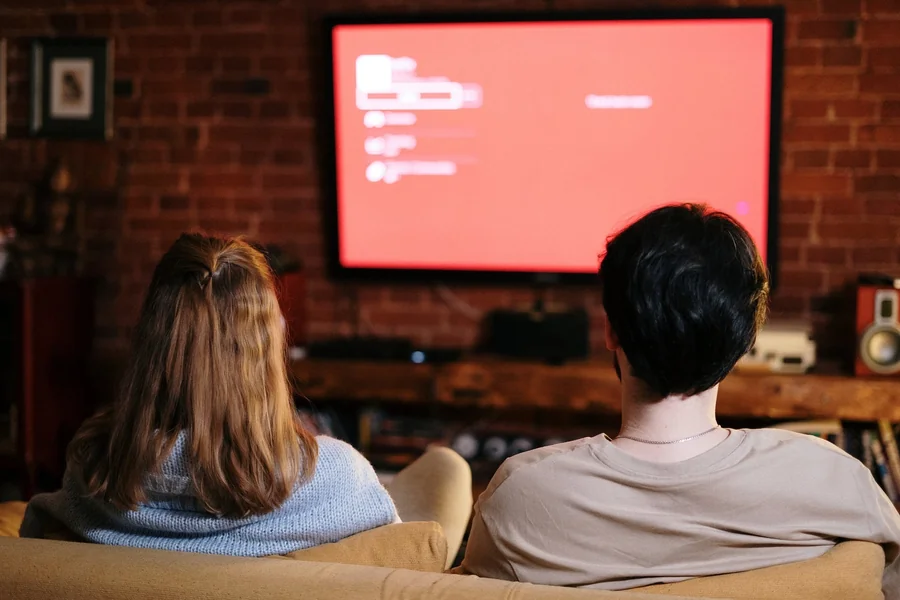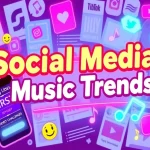In recent years, the rise of streaming services has revolutionized the way people consume television content. Once dominated by traditional TV networks and cable subscriptions, the entertainment landscape has shifted significantly. Streaming platforms like Netflix, Amazon Prime Video, Disney+, and Hulu have taken center stage, leading to a seismic shift in the media and entertainment industry. The impact of streaming services on traditional television has been profound, affecting everything from viewer habits to the economics of broadcasting.
In this article, we will explore how streaming services have impacted traditional TV, the challenges faced by traditional broadcasters, and the future of television consumption.
The Changing Viewing Habits of Audiences
The most immediate effect of the rise of streaming services is the dramatic shift in viewership patterns. Traditional TV, which was once the dominant form of entertainment, is now facing stiff competition from on-demand streaming services that offer flexibility and convenience. The advent of streaming has given audiences more control over when, where, and how they watch TV shows and movies.
On-Demand Content Over Scheduled Programming
One of the key features that distinguish streaming services from traditional TV is the on-demand model. Viewers no longer have to wait for a specific time to watch their favorite shows or movies. Streaming platforms allow users to access a vast library of content at their convenience. This has disrupted the traditional TV model, where viewers had to tune in at a scheduled time to catch a show.
For example, traditional TV networks rely on a fixed schedule, with specific time slots assigned to programs. If a viewer misses an episode, they may have to wait for a rerun, which could take days or even weeks. On the other hand, streaming services allow users to watch the content at their own pace, making binge-watching a cultural phenomenon. This flexibility is appealing to many viewers, especially those with busy lifestyles, who may not have the time to follow a rigid broadcast schedule.
The Rise of Binge-Watching Culture
The rise of binge-watching is one of the most significant impacts streaming services have had on TV consumption. Platforms like Netflix pioneered the model of releasing entire seasons of shows at once, enabling users to watch multiple episodes or even an entire season in one sitting. This shift has changed the way viewers engage with content, as they no longer need to wait a week between episodes or follow traditional seasonal schedules.
This trend has been so successful that traditional TV networks have started adapting to it. For example, HBO and AMC have begun releasing full seasons of some of their most popular shows, like Game of Thrones and Breaking Bad, in response to the binge-watching culture. However, despite these adaptations, streaming platforms continue to hold a significant edge in this area due to their ability to offer immediate access to content.
The Decline of Traditional TV Ratings and Ad Revenue
The rise of streaming has led to a noticeable decline in traditional TV ratings. As more viewers migrate to streaming services, particularly younger generations, the number of people watching traditional TV has decreased. This shift in audience behavior has caused challenges for traditional broadcasters who rely on advertising revenue driven by high viewership numbers.
Changing Advertising Models
Traditionally, TV networks made money through commercial advertising. The more people who watched a show, the more money the network could charge for advertising space. However, with the rise of streaming services, advertising revenues for traditional TV have started to dwindle. Services like Netflix and Amazon Prime Video offer ad-free viewing for a subscription fee, attracting users who prefer to avoid interruptions during their viewing experience.
In response, some traditional TV networks have attempted to adapt by launching their own streaming platforms. HBO Max, Peacock, and CBS All Access (now Paramount+) are examples of major networks branching into streaming, offering both live content and on-demand options to appeal to a wider audience. However, these networks still face challenges in transitioning to a streaming-first model while maintaining their traditional revenue streams.
The Impact on TV Networks and Content Creators
Streaming services have reshaped not only how audiences consume content but also how content is created and distributed. TV networks and content creators have been forced to rethink their production and distribution strategies in order to compete in the new entertainment landscape.
Original Content Creation
One of the defining features of streaming services is their focus on original content. Platforms like Netflix, Amazon Prime Video, and Disney+ have invested heavily in producing their own shows and movies. This investment in original content has raised the bar for the quality of programming available to viewers. High-budget shows like Stranger Things, The Mandalorian, and The Boys have attracted millions of subscribers and are some of the most-watched programs in the world.
For traditional TV networks, this has been a wake-up call. The once dominant model of acquiring content from third-party studios has been increasingly overshadowed by the rise of original programming on streaming platforms. As a result, TV networks have started investing more in their own original productions. Networks like NBC and ABC now produce exclusive content for their streaming services, while others, such as HBO, have become renowned for their high-quality original programming.
The Battle for Licensing and Distribution Rights
With the rise of streaming services, traditional TV networks and content creators are also engaged in a battle for licensing rights. Major studios and networks are increasingly reluctant to sell their content to traditional TV channels, opting instead to offer exclusive rights to streaming platforms. This has created a complex landscape in which the biggest content producers are negotiating directly with streaming services, bypassing traditional broadcasters altogether.
For example, shows like Friends and The Office were once staples on traditional TV but have now become exclusive content on streaming platforms like Netflix and Peacock. This trend has left traditional networks scrambling to secure their own library of exclusive content, leading to increased competition and higher costs for acquiring licensing deals.
The Future of Television Consumption
As the popularity of streaming services continues to rise, the future of traditional TV remains uncertain. While streaming platforms have had a profound impact on how viewers consume content, traditional TV is not entirely obsolete. There are still millions of viewers who rely on cable and satellite TV for their daily entertainment, particularly for live events such as sports, news broadcasts, and award shows.
Hybrid Models of TV Consumption
In response to the changing landscape, many viewers are adopting hybrid models of TV consumption. While streaming platforms are becoming the preferred choice for on-demand content, traditional TV is still used for live events. The future may see a greater integration of streaming and traditional TV, as broadcasters continue to adapt their models to meet changing viewer preferences.
For instance, live-streaming services like YouTube TV and Sling TV have emerged as alternatives to traditional cable, offering live TV broadcasts through streaming platforms. These services have gained popularity among younger audiences, who want the flexibility of streaming but still desire access to live programming. Traditional TV networks, in turn, are increasingly offering their own streaming options to cater to these hybrid consumption models.
The Increasing Role of Smart TVs and Connected Devices
The role of smart TVs and connected devices has also played a significant part in the convergence of streaming and traditional TV. Modern televisions now come with built-in streaming apps, making it easy for users to switch between traditional TV broadcasts and streaming content. Devices like Amazon Fire TV, Apple TV, and Google Chromecast have further blurred the lines between traditional television and streaming services, allowing for a more seamless viewing experience.
This integration of smart technology with traditional TV could be the key to the future of television consumption, allowing for greater flexibility and user control.
Conclusion
The impact of streaming services on traditional TV has been profound, fundamentally altering how content is consumed, produced, and distributed. The shift from scheduled programming to on-demand viewing, the decline in TV ratings, and the rise of streaming-first content have all reshaped the entertainment landscape. However, traditional TV is not entirely dead. As hybrid models and connected devices become more common, the future of television consumption will likely involve a blending of streaming services and traditional TV.
As technology continues to advance, and viewer preferences evolve, it’s clear that the media industry will continue to adapt, shaping the way we consume content for years to come.





